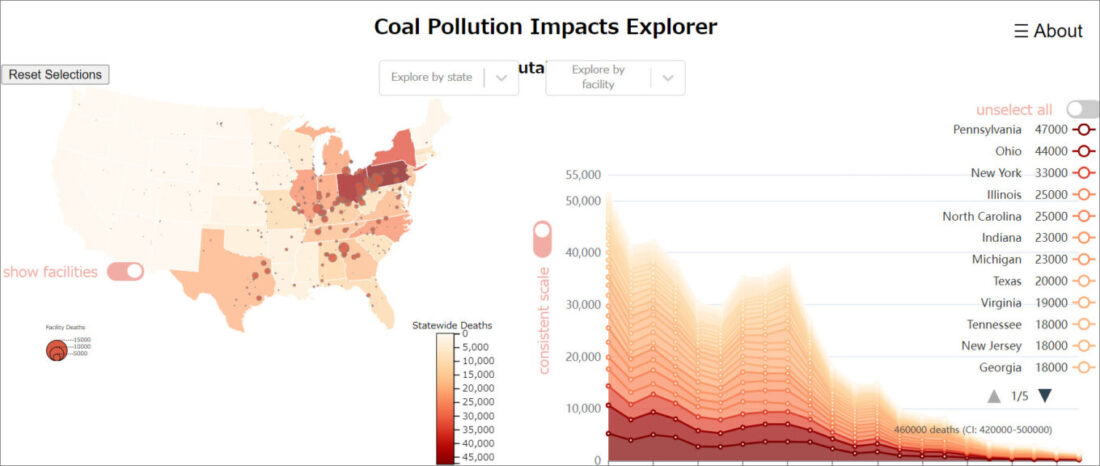A new study led by Harvard T.H. Chan School of Public Health, George Mason University, and the University of Texas at Austin found that coal-burning power stations emit fine particulates (coal PM2.5) containing sulfur dioxide that are associated with higher mortality than other types of PM2.5. The study was published on November 23, 2023, in the journal “Science.”
The study used estimates of annual PM2.5 exposure from 480 coal-fired power plants (“electricity-generating units”, or EGUs) in the United States over the period of 1999-2020 and 650 million annual Medicare (public health insurance) individual death records from 1999-2016 to estimate mortality attributable to PM2.5.
The researchers calculated that a one μg/m3 increase in annual average coal PM2.5 was associated with a 1.12% increase in all-cause mortality, a risk 2.1 times greater than that of PM2.5 from any other source. They also found that 460,000 deaths were attributable to coal PM2.5, representing 25% of all PM2.5-related Medicare deaths before 2009 and 7% after 2012.
The study also found that 390,000 of the 460,000 deaths attributable to coal-fired power plants took place between 1999 and 2007, averaging more than 43,000 deaths per year. After 2007, these deaths declined drastically, to an annual total of 1,600 by 2020.
“Beyond showing just how harmful coal pollution has been, we also show good news: Deaths from coal were highest in 1999 but by 2020 decreased by about 95%, as coal plants have installed scrubbers or shut down,” lead author Lucas Henneman, assistant professor in the Sid and Reva Dewberry Department of Civil, Environmental, and Infrastructure Engineering at Mason said.
He added, “These findings can help policymakers and regulators identify cost-effective solutions for cleaning up the country’s air, for example, by requiring emissions controls or encouraging utilities to use other energy sources, like renewables.”
Senior author Corwin Zigler, Associate Professor in the Department of Statistics and Data Sciences at UT Austin and founding member of the UT Center for Health & Environment: Education & Research, said “This study provides us a better understanding of how health will continue to improve and lives will be saved if we move further toward a clean energy future.”
The researchers were also able to quantify deaths attributable to specific power plants, producing a ranking of the coal-fired power plants studied based on their contribution to coal PM2.5’s mortality burden. They found that 10 of these plants each contributed at least 5,000 deaths during the study period. They visualized the deaths from each power plant in a publicly available online tool. https://cpieatgt.github.io/cpie/

Source
Harvard T.H. Chan School of Public Health:Particulate pollution from coal associated with double the risk of mortality than PM2.5 from other sources(Link)
Science:Mortality risk from United States coal electricity generation(Link)
Written/Published on: SCIENCE 23 Nov 2023 Vol 382, Issue 6673 pp. 941-946
DOI: 10.1126/science.adf4915
Published: November 23, 2023
